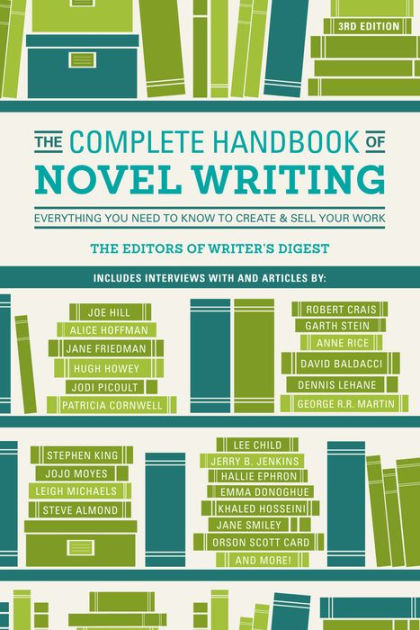The Complete Handbook of Novel Writing
 Buy the Book:
Buy the Book:Amazon
Barnes & Noble
bookshop.org Shop
Books-A-Million
Indigo
Published by: Writer's Digest Books; Third edition
Release Date: January 13, 2017
Pages: 528
ISBN13: 978-1440348396
Overview
Including my interview with Janice Gable Bashman, “How Structure Supports Meaning,” The Complete Handbook of Novel Writing, 3rd Edition, shares techniques and strategies from established writers for generating ideas, connecting with readers emotionally, and finding the inspiration you need to finish your work. This fully revised edition includes an updated marketing section for navigating the unique challenges and possibilities of the evolving literary marketplace.
Praise
“If you are just venturing into writing a novel, this is a great place to start. If on the other hand you've read many books on the craft of writing, but looking for something that hits all the bases from a variety of sources to add that little bit of extra insight, these short chapters offer it in abundance.”
—Steve Oh, Amazon reviewer
Excerpt
Janice Bashman: The word structure can mean different things when referring to novel writing. How do you define it?
Kathryn Craft: I see it two different ways. The most crucial decisions an author makes are in terms of storytelling structure, which really isn’t about “telling” at all. It’s about how you will raise questions in the reader’s mind about whether your character can achieve her story goal. Storytelling structure fuels the novel with backstory motivation that creates a deep desire for the protagonist, suggests the stakes should the character not succeed, and creates a yardstick by which to assess the protagonist’s progress (“Yes, this is just what he needed,” or “Oh no, things aren’t looking so good for him just now!”). With the right kind of overarching span and page-by-page tension, the desire to answer the story question will pull the reader all the way to the end of a book.
While wrestling down the myriad decisions of storytelling structure, though, we writers sometimes forget to tend to the way the larger structures of a book—what I call “macrostructures,” ([or] how it’s divided into chapters and sections and perspectives)—can contribute meaning. One of my favorite examples is the novel The Secret Life of Bees, in which Sue Monk Kidd begins each chapter with a nonfiction epigraph about bees. As the novel progresses, the astute reader can’t help but seek parallels in human and insect behavior…
Amazon Excerpt